In the footsteps of a plan
Each position can be viewed, observed and dissected differently by varying strength of players. The more one knows about various aspects of the game, the more nuances they aim to look for. A beginner may not feel the reasoning behind prolonged thought in a position which might have occurred numerous times, while a strong Master will try to rummage through the previous plans, theory and come up with something of his own. GM Sundararajan Kidambi explains of the importance of follow through of a plan by walking in the footsteps by showing various examples of different decades. It is undoubtedly worth checking out if you wish to enrich your chess knowledge. Photo: Shahid Ahmed
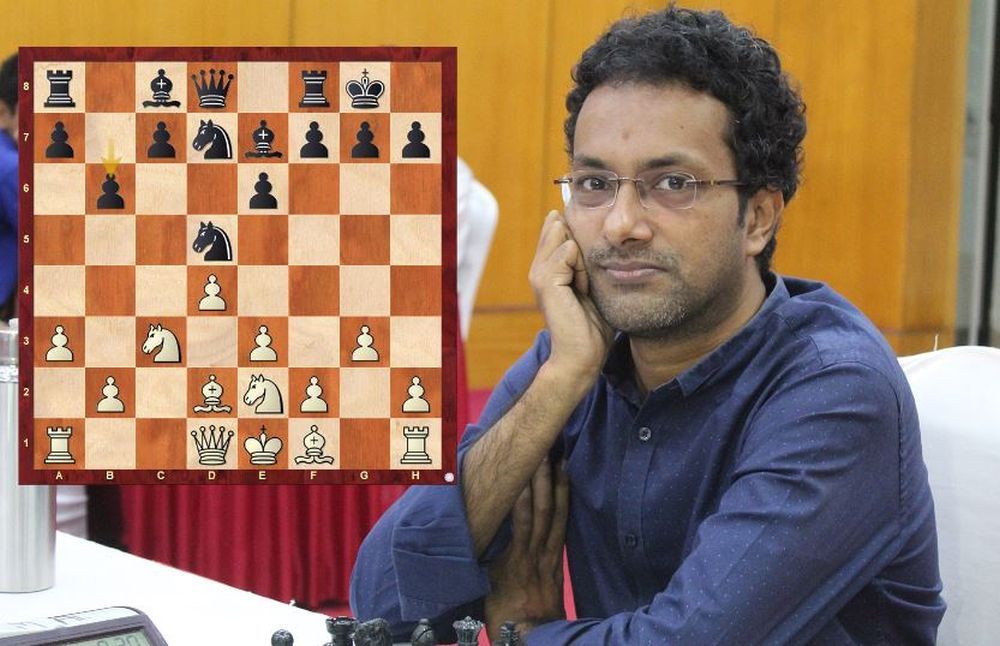

“The important thing is not to stop questioning. Curiosity has its own reason for existing. One cannot help but be in awe when one contemplates the mysteries of eternity, of life, of the marvellous structure of reality. It is enough if one tries to comprehend only a little of this mystery every day.” - Albert Einstein
Observing a position in one's own way and looking for ways to understand what is going on, is a key characteristic of any improving player. There are many different ways and aspects in a single game that attracts the attention of a seeker, and this as I come to see is an ever growing process. I had a look at a couple of older games recently and tried to view the position in terms of pawn structure and exchanges which are always a fundamental aspect of Chess Understanding.
Ponomariov - Kramnik, Corus Wijk aan Zee 2003
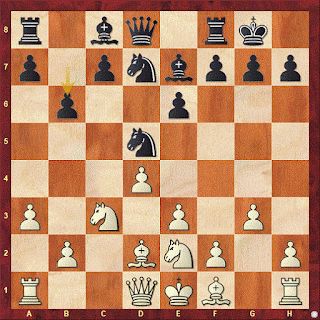
For example, let us start from the position after nine moves from a game between two world champions. White played
10.Nxd5 exd5
It is a common idea in Queen's Gambit and sometimes in Queen's Indian positions to block the long diagonal of the light square Bishop of Black, especially after b7-b6.
11.Bg2 Nf6 12.0-0 Ne4 13.Rc1 Bb7
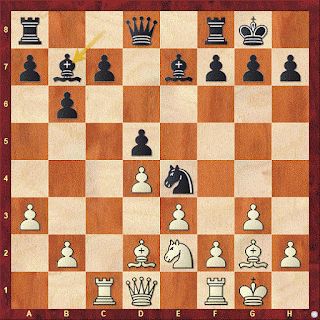
Black chooses to develop the bishop to b7. Again this is not an easy decision, knowing that the bishop will more or less be inactive there. In Queen's Gambit where Black aims for hanging pawns, Black sometimes prefers the e6-square for the bishop where it is more active and at the same time fulfils the task of defending the central pawn. Here, however he might be running into Ne2-f4 time and again. The fact that White has fianchettoed his Bishop, makes one wonder if f5 might be a more interesting spot for the light square bishop in such a piece placement.
14.Qc2 Rc8
14... Nxd2 15.Qxd2 Re8 16.Nf4 c6 was a possible option to gain the pair of bishops. Though, White still remains a trifle more pleasant because of the fixed pawn structure and nice placement of his minor pieces, nevertheless this a clearer way for Black to continue.
15.Rfd1 Bd6
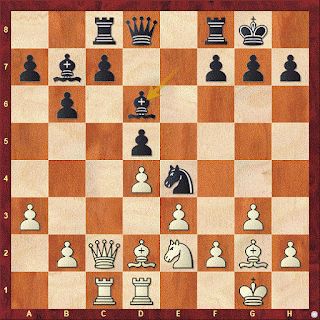
16.Bb4
A very interesting decision. An exchange variation of Queen's Gambit (or a Carlsbad structure) where Black has already committed b7-b6 has its own set of nuances. White's dark square bishop is clearly inferior to Black's counterpart, so in that sense it is natural that White seeks such an exchange. This is especially so, since Black's pawn stands on b6 and not b7. In this case Black's c-pawn remains backward whether on c7 or c6. The more active idea for Black is to go for hanging pawns with c5 break, but even in that case the exchange of dark squared bishops is in White's favour. Note that an exchange of one more pair of minor pieces also seems to favour White, as Black finds it hard to defend the central structure with lesser minor pieces and also to drum up his own counterplay on the kingside.
16...Qf6
16...c5 seems to be a more natural option, whence White would have continued with 17.dxc5 bxc5 18.Be1 Qe7 19.Nc3 when White initiates some minor piece exchanges and puts pressure on the hanging pawns of Black. Steinitz and Karpov loved such positions! 16...Bxb4 17.axb4 is a favourable exchange for White, as Black's a-pawn would also remain backward after that.
17.Nc3 Nxc3 18.Qxc3 c6 19.Bxd6 Qxd6 20.b4!
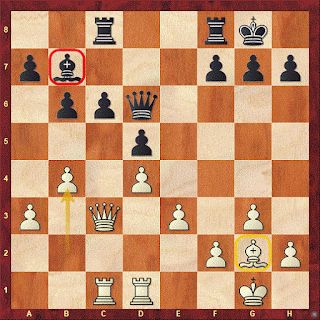
White's position has improved quite a bit. He has a queenside clamp, Black retains a backward pawn on c6 and also has the worse bishop.
20....Rc7 21.a4!
There are two pawn levers in the position, namely b4-b5 and a4-a5. Going for the direct approach with 21.b5 is also possible 21...Rfc8 22.Bh3 Rd8 23.bxc6 Rxc6 24.Qb4! when white retains some advantage due to the possession of the c-file and a better pawn structure. But, as a defender it is much more difficult when the aggressor maintains the tension and keeps all the options open. As Nimzowitsch rightly said 'the threat is stronger than execution'. White keeps black guessing in the game.
21... Bc8 22.a5 Ba6 23.Ra1 Bb5 24. Rdc1 Re8 25.axb6 axb6
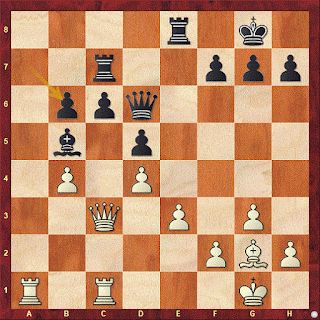
26.Bf1!
A wonderful exchange, this time it appears to be exchanging our good bishop for the opponent's bad one. But we need to look at the position deeper. Remember Bronstein's quote of 'Bad bishop protects good pawns'. Here Black's dark squared bishop protects the c-pawn and also the a6 square which can be used as a strong point for White. After the exchange of bishops, only major pieces remain on the board and major pieces are quite poor defenders (as pointed out by Pachman in his Modern Chess Strategy!), they are not suited for such a task of merely defending pawns and squares. They need more active occupations.
26...Bxf1 27.Kxf1 Rb8 28.Ra6 Qd7 29.Kg1 h6 30.Qa3 Rcc8
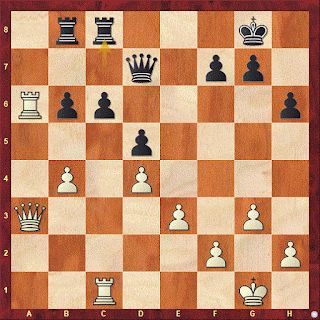
This is another very interesting moment from the game. It is clear that White has made progress, and the most natural way to play would be to try and infiltrate along the a-file and probe for more weaknesses there. There is also another approach, one that is again mentioned from the manuals of Chess Strategy right from Nimzowitsch's times - Opening up a second front or creating a second weakness. Clearly White cannot be doing anything on the kingside right? Or can he!? White continued with
31.h4!
This is a very different way to look at the position. If we were in pure Rook endgames, this would always be a useful move to prevent the opponent from gaining space with g7-g5 and also eliminating any sort of weak pawn on h2 even in the remotest scenario. The structure where the pawn chain remains intact and one pawn protects another is very economical, with the king protecting the base pawn on f2. But with the queens remaining on the board, entirely different dynamics are at work. So what does White really want!? The further course of the game will enlighten us on this aspect.
31...Qf5 32.Ra7 g5 33.h5! Qf3
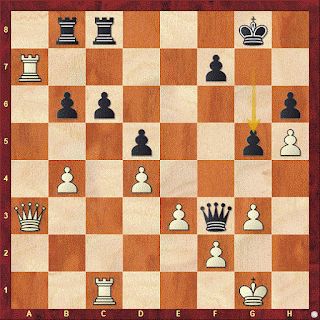
White has ensured that the h-file remains closed as any opening up there, would weaken his own king. Now his idea becomes clearer, he understood that Black would not enjoy just sitting tight in a prospect less position and baited Black with hopes of kingside counter play. Black might even end up winning the h-pawn, but he has lost some time and taken his queen on a dangerous foray, straying from defense. Now the queenside and central pawns turn out to be more of a weakness and we should not forget that g7-g5 also weakens Black's kingside a little. In short a brilliant and veiled trade off, effectively done!
34.Qd3 Kh8
The line 33...Qxh5 34.Qf5! Qg6 35.Qxg6 fxg6 36.Rd7! when Black's weak pawns start to feel awkward is a good illustration of White's concept!
35.Qa6! Kg7?! 36.b5! c5 37.dxc5 bxc5 38.Qg6! 1-0
The death knell finally rang loud unexpectedly on the second front which was envisioned with White's 31.h4! Quite a fine game by Ruslan who outplayed Kramnik in a sort of quiet looking position out of the opening.
Now fast forward ten years and let us look at a very similar position from the same opening, this time between two other World Champions!
Carlsen - Anand, Tal Memorial 2013
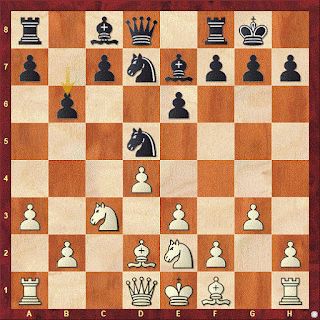
As in Ponomariov-Kramnik, White continued with
10.Nxd5 exd5 11.Bg2
and here Black responded
11...Bb7?!
Again as seen from the last game, the bishop is a problem piece in these kind of positions. A very interesting approach has been mentioned by Krasenkow in the annotations to this game in Mega Database and one that has been tried out by some other players. He suggests 11...Nf6 as Kramnik did but the idea was to follow up with 12.0-0 Bf5! This is a much better square for the bishop especially considering the fact that White has fianchettoed his light squared bishop. Black takes away the c2-square from the opponent's queen and perhaps the rook too. This means that White finds it harder to put pressure against the backward c7-pawn. Overall, with more active pieces (especially the light square bishop) Black seems to maintain some sort of dynamic equilibrium!
12.Bb4!
Carlsen improves upon the execution of the plan from the last game, by immediately offering an exchange of dark squared bishops. In his day Botvinnik would say, I knew this plan from a game of Levenfish versus Kotov etc., and I guess Carlsen would have said, I knew this from Ponomariov-Kramnik.😋
12...Nf6
12...c5 would have led to 13.dxc5 bxc5 14.Bc3 Nf6 15.0-0 Ne4 16. Nf4!? White's pieces are ideally placed to face the hanging pawns and the position is unpleasant for Black.
13.0-0 Re8 14.Rc1 c6 15.Bxe7 Rxe7
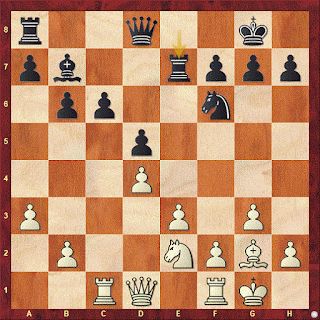
Slightly different placement of pieces when compared with the previous game. Since, Black's knight is not on e4, Magnus prefers the more active f4-square for his knight and in general plays for the Botvinnik like plan of central pawn roller with f3-e4. For the moment he maintains flexibility
16.Re1 Qd6 17.Nf4 Bc8?!
Black tries to retrace the steps of his bishop to come to a more useful diagonal i.e. c8-h3. Unfortunately, Black loses time in doing this and at this moment lacks proper coordination. If Black had played something like 17...Rc7, White would have slowly improved with 18.b4 and would have kept improving his position and intensifying the pressure in the long run. As a defender these kinds of positions without any clear prospects are perhaps the hardest to play.
18.Qa4!
White understands that Black's plan is to play Be6 and specifically prepares a response against it. He gains a tempo by attacking the c-pawn and prepares the central break e4 in quick time.
18....Rc7 19.f3 Be6 20.e4
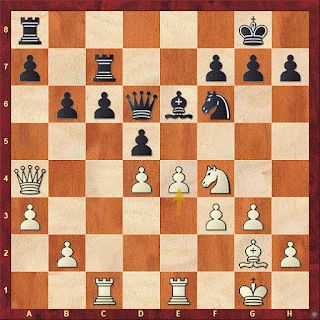
The picture reminds me of a certain Botvinnik versus Keres game from USSR Championship 1952 from a Carlsbad structure where the arrival of e4 on the board signified a complete domination.
20...dxe4
This improves the sphere of influence of White's light square bishop, but the central pawn roller was hard to deal with anyway, especially considering Black's lack of coordination.
21.fxe4 Qd7
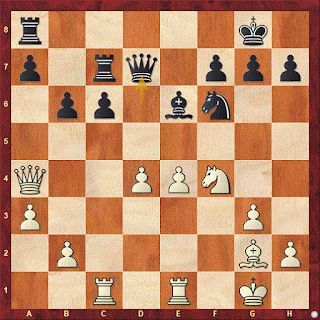
White has a very good advantage in space and is a picture of great coordination when compared with Black. Magnus transforms this into an advantageous endgame with deft moves in his typical manner.
22.d5! cxd5 23.Qxd7 Rxd7 24.Nxe6 fxe6 25.Bh3! Kh8 26.e5 Ng8 27.Bxe6 Rdd8 28.Rc7 d4 29.Bd7! 1-0
White's pieces completely dominate their counterpart and there is no stopping the e-passed pawn.White achieved a complete domination in the endgame almost effortlessly. That just shows how dangerous Black's position was.
The above two games showed some ideas in relation to the dark squared bishop exchange in this specific pawn structure. This is just a very minor part of enjoying the beauty of Chess. It opens out a new avenue of approach to understanding the inner harmony hidden in any position. I have barely scratched the surface and would love to continue to appreciate the delights that Caissa is bound to offer us. To explore this idea further I will conclude by presenting two more diagrams from recent games of very strong players where White tried to exchange the dark squared Bishops in this pawn structure.
Happy Explorations and a great new year to one and all.
Kramnik - Pelletier, Geneve Masters 2015

Vidit - Shankland, Prague 2020
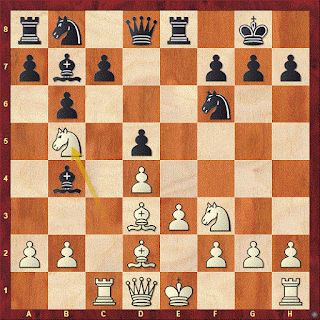
I have enclosed the relevant games which have been taken from Mega and which includes analysis of GM Ftacnik, GM Krasenkow and my own ideas which have been added in detail as a replayable link. Vidit's game is also included with his own annotations.
Replay the analyzed games
About the author
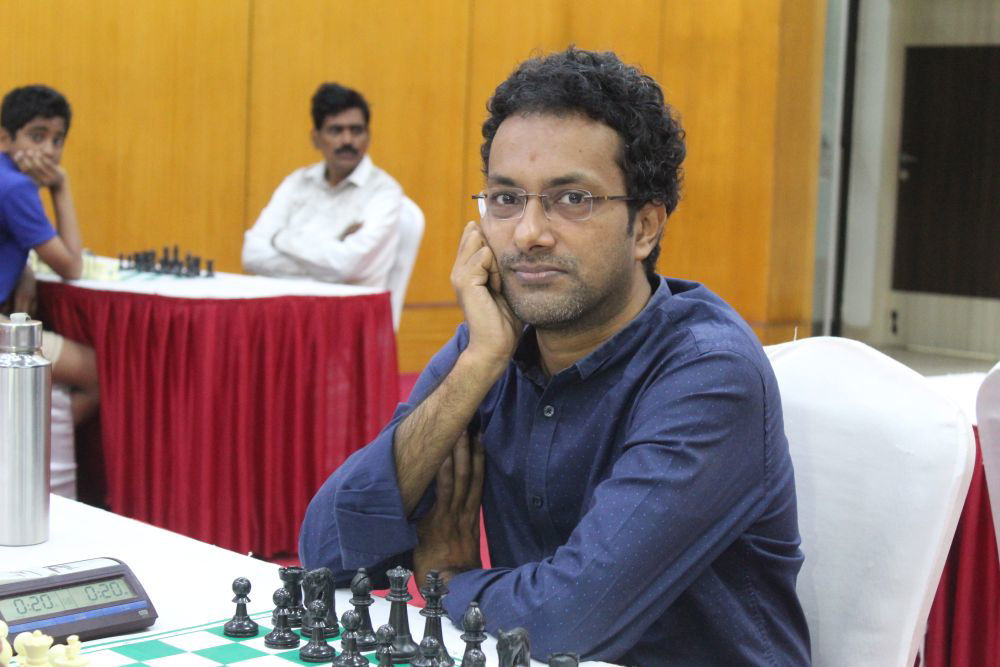
ChessBase India is happy to see GM Sundararajan Kidambi writing his seventh post of the year 2021 in his blog "Musings on Chess". Knowing what an encyclopedic knowledge the grandmaster from Chennai possesses, I think we are in for a treat! One can only hope that Kidambi continues writing regularly! We will keep reminding him about it! We are awaiting to read his first post of the year 2022 and be enriched.
Links
The article was edited by Shahid Ahmed





































